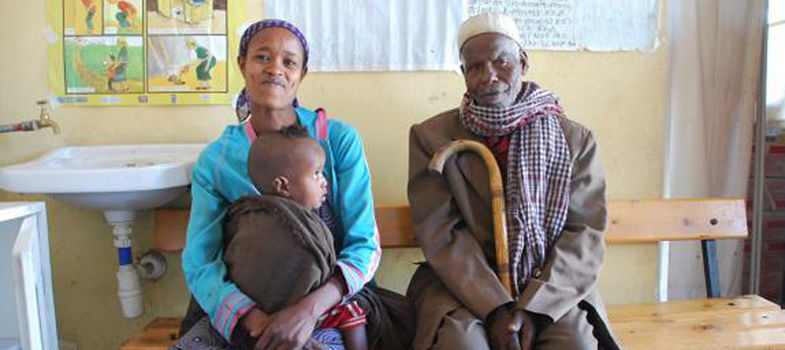9.7.1 How to check blood pressure
There are several types of blood pressure equipment (Figure 9.9).

When you take the woman’s blood pressure, first tell her what you are going to do, and why. Make sure she is sitting or lying comfortably and feels relaxed. Figure 9.10 shows the process step by step.
As the air leaks out, you will start to hear the woman’s pulse through your stethoscope. Notice where the needle is (see Figure 9.11), or where the column of mercury stops if you have a tall gauge (as on the left of Figure 9.9).

![]() If a woman’s blood pressure is ever higher than 140/90, then it is too high and can be a warning sign. She needs to be referred to a health centre.
If a woman’s blood pressure is ever higher than 140/90, then it is too high and can be a warning sign. She needs to be referred to a health centre.
You can record the woman’s blood pressure:
- when you start to hear the pulse (this will be the top number), and
- when the pulse disappears or gets very soft (this will be the bottom number). Check the woman’s blood pressure at each visit.
- Write the blood pressure down on her antenatal record card so you can check for changes over time (see the example in Figure 9.12). If her blood pressure is going up, ask her to come back every week until you are sure that it is not still rising.
Look carefully at Figure 9.12. Is there a month in which this woman’s blood pressure is high enough to be a warning sign?
No. The top number never goes above 110, and the bottom number never goes above 72. It is normal for each number to vary a little bit from month to month.
9.7 Checking her blood pressure


